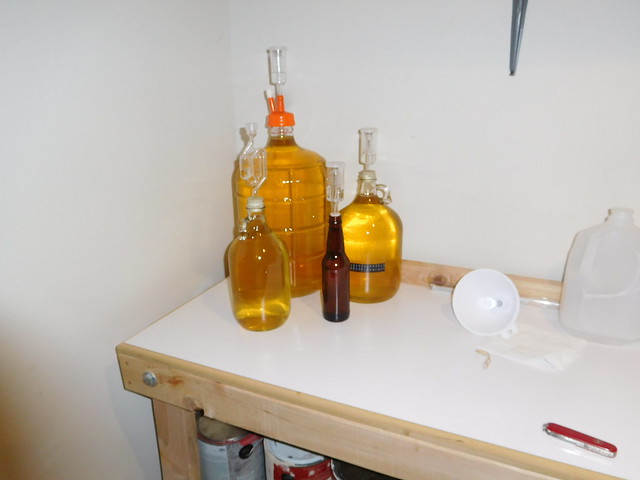JordanC92
Member
- Joined
- Jan 30, 2018
- Messages
- 8
- Reaction score
- 0
My meads been Brewing for just over a week now, there is a build up of about 1 inch (or just over that) of sediment at the bottom of the demijon.
Should I move it into a secondary demijon or leave it a little longer?
Also I lost about 2/3 inches of liquid due to overfilling and it bubbling out of the air lock, when i do go to transfer it would it be OK to mix water and honey and add it to the new demijod? (this should make up the loss)
Thanks
Jordan
Fermentation has slowed down a good bit as well
Should I move it into a secondary demijon or leave it a little longer?
Also I lost about 2/3 inches of liquid due to overfilling and it bubbling out of the air lock, when i do go to transfer it would it be OK to mix water and honey and add it to the new demijod? (this should make up the loss)
Thanks
Jordan
Fermentation has slowed down a good bit as well



 Nice and clear, Maylar, but you seem to have lost a lot of the cider. Was that because of eager tastings or because of some other happenstance?
Nice and clear, Maylar, but you seem to have lost a lot of the cider. Was that because of eager tastings or because of some other happenstance? 









































![Craft A Brew - Safale S-04 Dry Yeast - Fermentis - English Ale Dry Yeast - For English and American Ales and Hard Apple Ciders - Ingredients for Home Brewing - Beer Making Supplies - [1 Pack]](https://m.media-amazon.com/images/I/41fVGNh6JfL._SL500_.jpg)












